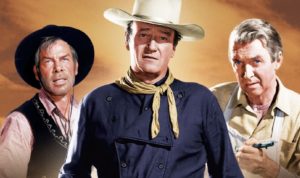Let me take you on a brief journey through the history of American education.
It is 1890, and we are observing class in a quaint one-room schoolhouse. The children are sitting up straight in their chairs, and the desks are arranged neatly in rows. An American flag is in the corner, and on the wall is displayed a list of rules, including, “Be not proud. Respect those who are older, and know more than yourself.” The children prepare for their daily lessons in spelling, penmanship, grammar, arithmetic, history, geography, and literature. In the course of the day, they will recite the “silent e” rule, chant the states and capitals, do multiplication drills, and read excerpts from the speeches of Patrick Henry and George Washington.
The teacher asks the students to take out their McGuffey Readers. Those working on the first reader hone their basic reading and spelling skills as they read a story about three boys, each of whom had a “fine, large cake.” They read: “James ate too much of his cake. It made him sick. Frank kept his so long, that it was not fit to eat. But Willy gave some of his to each of his schoolmates. He then ate some himself and gave the rest to a poor, old, blind man. Which, do you think, made the best use of his cake?”1
Older students improve their reading, writing, and speaking skills as they learn the story of George Washington and the cherry tree, study definitions of words found in the Sermon on the Mount, and memorize poems about the transience of life on earth and the eternity of heaven.
Let us now leave this one-room schoolhouse, and move ahead three-quarters of a century, to a public school in the 1960s. The school is a large, institutional building, housing hundreds of students. No walls separate the classes. A sign reads, “Question Authority.” Gone are the desks arranged in rows, with the teacher presiding at the head. In their place are “work stations” or “activity centers.” The class is fluid and bustling, and there is a constant din as the students confer on projects. History, literature, and composition have been abandoned as too abstract and remote from the experiences of a child. They have been replaced by “social studies,” realistic stories, and vocational training.
On this day, the teacher gathers the students together, and they sit in a circle on the floor. The following dialogue ensues:
TEACHER: So some of you think it is best to be honest on tests, is that right? (Some heads nod affirmatively.) And some of you think dishonesty is all right? (A few hesitant and slight nods.) And I guess some of you are not certain. (Heads nod.) Well, are there any other choices or is it just a matter of dishonesty vs. honesty? . . .
TRACY: You could be honest in some situations and not in others . . .
SAM: It seems to me that you have to be all one way or the other.
TEACHER: Just a minute, Sam. As usual we are first looking for the alternatives that there are in the issue. Later we’ll try to look at any choice that you may have selected. . . . [emphasis added] Later, we will have buzz groups in which you can discuss this and see if you are able to make a choice and if you want to make your choice part of your actual behavior. That is something you must do for yourself.
GINGER: Does that mean that we can decide for ourselves whether we should be honest on tests here?
TEACHER: No, that means that you can decide on the value. I personally value honesty; and although you may choose to be dishonest, I shall insist that we be honest on our tests here.2
Now let us move ahead again, this time to a public school today. The classroom, with its thirty-five or forty students, appears to be bursting at the seams. The walls are adorned with posters of Nelson Mandela and Sacagawea. A sign at the head of the classroom reads, “It is not our differences that divide us. It is our inability to recognize and celebrate those differences.” The students are studying the United Nations in social studies, acid rain in science, and Maya Angelou in English.
The teacher has set aside part of the day for values education. She gets her lesson plan from a book called Living Values Activities for Children, an educational program supported by UNESCO (the United Nations Educational, Scientific, and Cultural Organization) and used in thousands of schools around the world. The lesson of the day illustrates the virtue of simplicity. Reading from the Living Values guidebook, the teacher says to her students, “Simplicity is learning from the Earth. Simplicity teaches us economy—how to use our resources wisely, keeping future generations in mind.” The goal of the day’s activity is for students to discuss the success of native cultures in using resources efficiently, and how we in modern society can learn from them and better practice the virtue of simplicity. She reads again from the handbook:
Many native cultures in Africa, the Americas, Australia, Asia, and the Pacific Islands showed respect for the Earth and its resources in their gathering and hunting practices. For example, Native American Indian tribes were simple, economical, and wise in their use of plants and natural resources. Indians in the deserts of what is now California used each part of the ocotillo plant—the roots, leaves, and stem. . . . The Indians considered themselves to be rich, as they were warm, were well fed, and had plenty of time for their arts and prayers.3
These three classrooms are representative of three major trends in the history of moral education. . . .
You might also like
Endnotes
1 William Holmes McGuffey, McGuffey’s First Eclectic Readers (Gordon Press, 1974), p. 58.
2 Louis E. Raths, Merrill Harmin, and Sidney B. Simon Values and Teaching: Working With Values in the Classroom (Columbus: Charles E. Merrill, 1966), pp. 114–15.
3 Diane Tillman, Living Values Activities for Children Ages 8–14 (Living Values: An Educational Program, Inc. 2000), pp. 213–14.
[groups_can capability="access_html"]
4 William J. Bennett, “Parents, Schools, and Values,” written testimony for the Committee on Economic and Educational Opportunities, U.S. House of Representatives, December 15, 1995.
5 For a detailed discussion of this subject, see my article “The Hierarchy of Knowledge: The Most Neglected Issue in Education,” in the Spring 2006 issue of The Objective Standard.
6 Kevin Ryan and Karen E. Bohlin, Building Character in Schools: Practical Ways to Bring Moral Instruction to Life (San Francisco: Jossey Bass, John Waley & Sons, Inc., 1999), p. 41.
7 Ibid.
8 Ryan and Bohlin, Building Character in Schools, p. 13.
9 John Dewey, The School and Society (Carbondale: Southern Illinois University Press, 1980), pp. 10–11.
10 Ibid., p. 20.
11 Diane Ravitch, Left Back: A Century of Failed School Reforms (New York: Simon & Schuster, 2000), p. 104.
12 Ibid., p. 238.
13 Phyllis Schlafly, Child Abuse In the Classroom (Westchester: Crossway Books, 1984), p. 293.
14 International Reading Association, The Evaluation of Children’s Reading Achievement (International Reading Association, 1967), p. 132.
15 William Kilpatrick, Why Johnny Can’t Tell Right From Wrong (New York: Simon & Schuster, reprint edition, 1993), p. 81.
16 Sidney B. Simon, Leland W. Howe, and Howard Kirschenbaum, Values Clarification: A Handbook of Practical Strategies for Teachers and Students (New York: Hart Publishing Company, Inc., 1972), p. 142.
17 Ibid., p. 76.
18 Ibid., p. 68.
19 Ibid., p. 116.
20 Ibid., p. 123.
21 Thomas Lickona, Educating for Character: How Our Schools Can Teach Respect and Responsibility (New York: Bantam, 1991), p. 236.
22 Leonard Peikoff, The Ominous Parallels: The End of Freedom in America (New York: Plume, 1983), p. 130.
23 Lickona, Educating for Character, pp. 273–74.
[/groups_can]
















